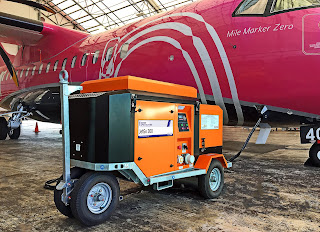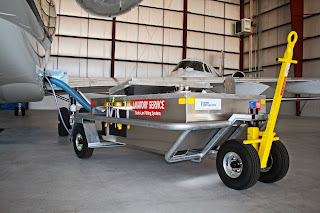How Your Small Airport or FOB Can Compete with Bigger Airports
It can be difficult running any small business in a field shared by far
bigger ones. Big businesses have a number of advantages (like an aircraft tug fleet, in this case) over their smaller competitors. They have more
resources and they offer more amenities. They have a far more robust
advertising budget, and perhaps most importantly, they have name
recognition. They’re an established presence and a well-known among
potential customers and clients.
That dynamic can prove disheartening for smaller businesses. Small airports and forward operating bases (FOBs) face these struggles too. However, being small has advantages that no big airport can match. Here are some key distinctions that every airdrome owner or manager should focus on in order to attract personal planes as well as private, corporate, and executive aircraft.
Less Stressful Approaching, Landing, and Taxiing
The bigger an airport gets, the busier it gets. That doesn’t just apply to aircraft and passengers. Another jetliner means another aircraft pushback, another baggage cart, and all the other ground support equipment (GSE) and personnel required to service it. Small airports and FOBs aren’t crawling with as many crew, craft, or GSE. The tower isn’t rushing the private and executive jets on and off of the runway. There’s no nerve-wracking runway-sharing or stressful navigation on the ground. The pilots and passengers of smaller aircraft will appreciate the pace of a smaller operation.
No Holding
In addition to the hurrying smaller craft face when using large airports, there’s the holding. Big airports get very busy. Organizing the dozens or hundreds of flights that are arriving at and departing from an airport every day often requires aircraft to be put into holding patterns. Waiting for runway space to open up can be extremely frustrating. It means more fuel burned and more time lost for airline and private pilots. It’s far less likely at a smaller airdrome.
More Personal Service
Personal service is something people enjoy and appreciate, and it provides a number of practical benefits. Private or executive pilots using a smaller airfield get to know the staff and crew running it, and the staff and crew get to know them. The staff can learn the pilots’ and passengers’ preferences, such as how much storage space they’ll need and what GSE their craft might require. That kind of personal help and attention can save those pilots a lot of time and hassle.
Fewer Security Delays
A large airport’s security protocols can cause delays, mix-ups, and other headaches. No doubt anyone reading this is very familiar with them. Every extra minute private and executive pilots and passengers can save, and every hassle they can avoid by using your airdrome is a solid point in your favor. With fewer requirements—especially if an airfield doesn’t handle international flights—landing at a smaller operation can save significant time in security procedure.
About AERO Specialties
AERO Specialties is one of the aviation industry’s most reliable manufacturers and distributors of ground support equipment (GSE). By combining cutting-edge innovations in recent technology with the most exacting manufacturing standards, they produce GSE designed to optimize any FBO or airport’s operations. AERO Specialties also ensures that each member of their team, from the GSE mechanics to sales and customer service, is thoroughly familiar with all the equipment, their functions, and operation. Basically, if your aviation business needs it, from their standard-setting aircraft ground power unit line to an LED marshalling wand, AERO Specialties will have it.
Make AERO Specialties your copilot to launch your aviation business to unreached heights, at Aerospecialties.com
That dynamic can prove disheartening for smaller businesses. Small airports and forward operating bases (FOBs) face these struggles too. However, being small has advantages that no big airport can match. Here are some key distinctions that every airdrome owner or manager should focus on in order to attract personal planes as well as private, corporate, and executive aircraft.
Less Stressful Approaching, Landing, and Taxiing
The bigger an airport gets, the busier it gets. That doesn’t just apply to aircraft and passengers. Another jetliner means another aircraft pushback, another baggage cart, and all the other ground support equipment (GSE) and personnel required to service it. Small airports and FOBs aren’t crawling with as many crew, craft, or GSE. The tower isn’t rushing the private and executive jets on and off of the runway. There’s no nerve-wracking runway-sharing or stressful navigation on the ground. The pilots and passengers of smaller aircraft will appreciate the pace of a smaller operation.
No Holding
In addition to the hurrying smaller craft face when using large airports, there’s the holding. Big airports get very busy. Organizing the dozens or hundreds of flights that are arriving at and departing from an airport every day often requires aircraft to be put into holding patterns. Waiting for runway space to open up can be extremely frustrating. It means more fuel burned and more time lost for airline and private pilots. It’s far less likely at a smaller airdrome.
More Personal Service
Personal service is something people enjoy and appreciate, and it provides a number of practical benefits. Private or executive pilots using a smaller airfield get to know the staff and crew running it, and the staff and crew get to know them. The staff can learn the pilots’ and passengers’ preferences, such as how much storage space they’ll need and what GSE their craft might require. That kind of personal help and attention can save those pilots a lot of time and hassle.
Fewer Security Delays
A large airport’s security protocols can cause delays, mix-ups, and other headaches. No doubt anyone reading this is very familiar with them. Every extra minute private and executive pilots and passengers can save, and every hassle they can avoid by using your airdrome is a solid point in your favor. With fewer requirements—especially if an airfield doesn’t handle international flights—landing at a smaller operation can save significant time in security procedure.
About AERO Specialties
AERO Specialties is one of the aviation industry’s most reliable manufacturers and distributors of ground support equipment (GSE). By combining cutting-edge innovations in recent technology with the most exacting manufacturing standards, they produce GSE designed to optimize any FBO or airport’s operations. AERO Specialties also ensures that each member of their team, from the GSE mechanics to sales and customer service, is thoroughly familiar with all the equipment, their functions, and operation. Basically, if your aviation business needs it, from their standard-setting aircraft ground power unit line to an LED marshalling wand, AERO Specialties will have it.
Make AERO Specialties your copilot to launch your aviation business to unreached heights, at Aerospecialties.com




Comments
Post a Comment